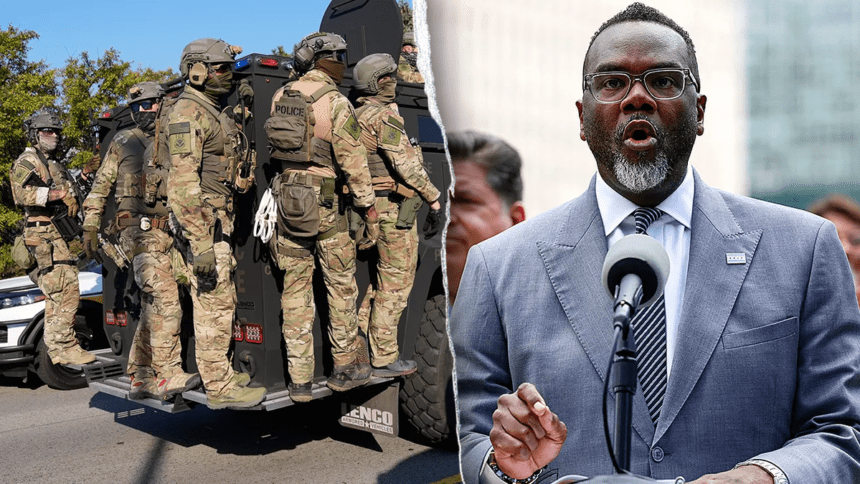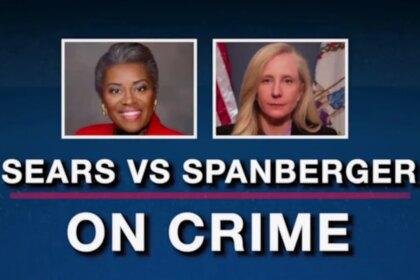Chicago’s New “ICE-Free Zones”: A Controversial Move Amidst Rising Tensions
In a significant move that has sparked heated debate, Chicago Mayor Brandon Johnson has signed an executive order establishing “ICE-free zones” within the city. This directive prohibits federal Immigration and Customs Enforcement (ICE) agents from utilizing city property for immigration enforcement operations. The implications of this order are far-reaching, affecting not only local law enforcement but also the broader national conversation surrounding immigration policy.
The Executive Order: A Bold Stance
On Monday, Mayor Johnson, a Democrat, made headlines by signing the executive order, which he claims is designed to protect the rights of Chicago’s immigrant communities. During a press conference, he emphasized that the order allows “unwilling private businesses” to refuse ICE’s use of their properties for staging operations. Johnson characterized the federal government’s actions as “out-of-control,” asserting that the order is a necessary step to uphold the constitutional rights of residents.
“If the federal government violates this executive order, we will take them to court,” Johnson declared, urging former President Donald Trump to “leave Chicago the freak alone.” His remarks reflect a growing trend among some city leaders to resist federal immigration enforcement, a stance that has garnered both support and criticism.
Federal Response: A Clash of Perspectives
The White House quickly condemned Johnson’s order, labeling it a “disgusting betrayal of every law-abiding citizen.” In a statement, officials accused the mayor of coddling “criminal illegal alien killers, rapists, and gangbangers,” framing the order as a dangerous escalation of the so-called “sanctuary” policies that have become a focal point in the national immigration debate.
This clash between local and federal authorities is not new. Sanctuary cities, which limit cooperation with federal immigration enforcement, have been a contentious issue for years. Critics argue that such policies undermine public safety, while supporters contend they protect vulnerable communities from unjust deportation.
Operational Challenges for ICE Agents
The implications of Chicago’s new policy extend beyond political rhetoric. A federal special agent involved in deportation efforts expressed concerns about the operational challenges posed by such sanctuary policies. According to the agent, who spoke to Fox News Digital, the restrictions on using city property for staging operations force ICE agents to prepare for missions in public spaces, such as supermarkets or parks. This not only complicates their operations but also exposes them to potential risks from anti-ICE activists.
“You’re going to go to a supermarket. Who’s at a supermarket? Everyone and their grandmother,” the agent remarked, highlighting the difficulties of conducting sensitive operations in crowded areas. The agent also noted that the visibility of their movements could lead to increased scrutiny and potential disruptions from protestors.
Historical Context: The Sanctuary City Debate
The sanctuary city movement gained momentum in the early 2000s, as cities like San Francisco and New York began implementing policies to protect undocumented immigrants from federal enforcement. These policies were often framed as a means to foster trust between immigrant communities and local law enforcement, encouraging individuals to report crimes without fear of deportation.
However, the rise of the Trump administration in 2016 marked a turning point in the national conversation about immigration. The administration’s aggressive stance on immigration enforcement led to increased tensions between federal and local authorities. The debate intensified as cities like Chicago adopted more stringent sanctuary policies, leading to legal battles and public protests.
The Broader Implications of ICE-Free Zones
Johnson’s executive order is part of a larger trend among progressive city leaders who are pushing back against federal immigration enforcement. Cities like Los Angeles, New York, and Seattle have also adopted similar policies, creating a patchwork of sanctuary jurisdictions across the country. This fragmentation raises questions about the effectiveness of federal immigration laws and the role of local governments in shaping immigration policy.
Supporters of sanctuary policies argue that they are essential for protecting the rights of immigrants and fostering community trust. Critics, however, contend that these policies create a safe haven for individuals who may pose a threat to public safety. The ongoing debate reflects deep divisions within American society regarding immigration, law enforcement, and civil rights.
The Future of Immigration Enforcement in Chicago
As Chicago implements its “ICE-free zones,” the city is likely to face legal challenges and increased scrutiny from federal authorities. The potential for conflict between local and federal law enforcement raises questions about the future of immigration enforcement in the city and beyond.
The special agent’s concerns about operational risks highlight the complexities of conducting immigration enforcement in a sanctuary city. As local governments continue to assert their authority over immigration policy, the balance between public safety and the protection of immigrant rights remains a contentious issue.
Conclusion: A Divisive Issue
Mayor Brandon Johnson’s executive order establishing “ICE-free zones” in Chicago represents a bold stance in the ongoing national debate over immigration policy. While supporters view it as a necessary measure to protect vulnerable communities, critics argue it undermines public safety and federal law enforcement efforts. As the situation unfolds, the implications of this order will likely reverberate beyond Chicago, influencing the broader conversation about immigration in America. The clash between local and federal authorities is far from over, and the future of immigration enforcement remains uncertain.










